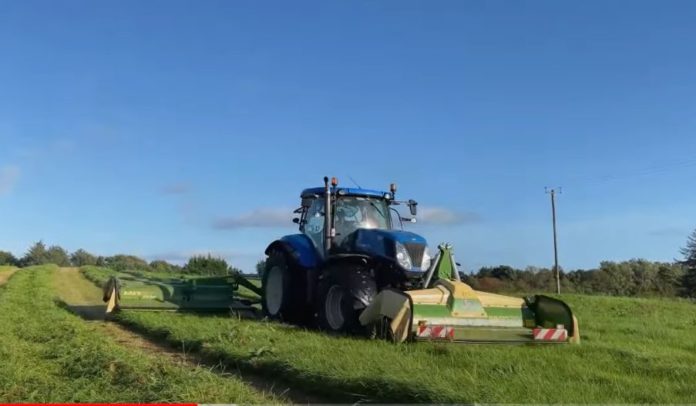Protect water quality
A local authority has appealed to farmers and agricultural contractors nationwide to ensure they “do everything they can” to protect water quality this silage season.
Limerick City and County Council said it is essential that all parties make “extra efforts” to ensure that they collect, store, and manage effluents to avoid compromising water quality.
Water quality
It has compiled some tips to achieve this:
- Ensure the silage base and associated collecting channels are free from defects. Where defective, render fit-for-purpose prior to use.
- Where you need to undertake repairs, seek professional advice. Consult relevant Department of Agriculture, Food, and the Marine building specifications. Use only proprietary sealants to seal joints on the base/ channels.
- Where possible, take cut-grass to the silage pit in the afternoon. This allows time for dew to evaporate.
- Wilt the grass prior to ensiling. This helps ensure that dry matter content is at a level where you minimise effluent release (attain at least 30% dm). Excessively wet grass can result in ‘slumping’ in the pit. This can cause channels to block and effluent to overflow into watercourses or to enter groundwater.
- Ensure you keep harvested grass behind the drainage channels on the base and ensure you keep the drainage channels free from blockage.
- Ensure that the polythene cover extends beyond the channels.
- Do not overfill pits. This is dangerous from a health and safety point of view and can also result in a collapse of the pit. Where the design volume of the pit is inadequate for the amount of silage you wish to harvest, fill the pit to the design limit and bale the remainder of the cut grass.
Silage effluent
- In the event that you observe silage effluent leaking from the pit, you must ensure that measures you take prevent entry to water. Field drains must be dammed, and effluent prevented from flowing to waters (i.e. break the pathway to waters).
- Check regularly to ensure that you are collecting all effluents. Ensure that the effluent collection tank is fit-for-purpose and that it is never allowed to overflow.
- Do not use farmyard manure or any organic material to cover the silage pit (use tyres/sandbags, etc.). Only clean water is permitted to flow off the silage cover – direct to a clean water drain.
- Always consult with your contractor to ensure you follow best practice.
- Regularly inspect field drains down-gradient of the farmyard (at least daily) to ensure that there are no signs of contamination. Directly ensiled grass can release up to 30 litres of effluent per tonne for the first few days after ensiling, so constant vigilance is required;
- When the pit is opened (animal housing period), keep the concrete apron at the front of the pit clean on a continuous basis. Failure to do so will result in polluting matter flowing to watercourses/drains. This is not permitted.
Other articles on That’s Farming:





